Paediatric oncologists are highly focused on how to minimise and manage the life-long damage their treatments inflict on young patients health. But for young survivors, the most immediate challenge is how to get an interrupted life back on track.
Today is the last day for 18-year-old Alexander Mangels. Standing with his mother in the pastel-toned Kinderonkologie unit of the University Hospital of Münster, he bids a warm farewell to his paediatric cancer team. His walk is strong, but his grip trembles. “Cancer has stolen a year of my life,” he says, between gritted teeth. The awkward teenager with his bald head takes a last look at the nurses who have accompanied him for more than a year. The dates of his chemotherapy treatment are engraved on his memory: 17 November 2013 to 1 February 2015.
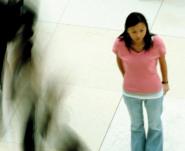 When the diagnosis of leukaemia is first pronounced, Alexander is only 16 years old, and his adolescence is brought to an abrupt end. Goodbye to college, first flirtations, parties. Alexander wanted to rebel or fall in love. Instead, he has fallen ill; it is his body that revolts against him.
When the diagnosis of leukaemia is first pronounced, Alexander is only 16 years old, and his adolescence is brought to an abrupt end. Goodbye to college, first flirtations, parties. Alexander wanted to rebel or fall in love. Instead, he has fallen ill; it is his body that revolts against him.
In place of turning into a man, he becomes a child again: fragile, submissive, over-protected by his relatives, sustained by doctors. A room on the 7th floor of an octagonal concrete tower defines his horizon – it looks like a space shuttle when he is in a good mood, he says. The walls are plastered with children’s drawings and joyful teddy bears hiding intensive care plugs. He spends his days in bed or walking the hospital corridors attached to a drip. His new friends are cancer patients like him. “Some were young but still died,” he says. There is not a tear or a sob; his gaze is fixed and his lips tightly pursed.
During his treatment, he says, he was not afraid. It was more a sense of fury. “Why me, why that? You accuse God, the world, the others… And then you save your energy and go to war.” But he never thinks about the future, his focus is on the present, his daily life summed up by the results of his blood tests. “If the values collapsed, I collapsed too,” he remembers.
At first, he believes chemotherapy is ‘only’ supposed to make his hair fall out. As he methodically swallows his pills during the eleven treatment cycles, spending one week at home, then one week in the hospital, he discovers the side effects: headaches, nausea, extreme tiredness and weakness. “There were days I didn’t even have the strength to speak. I could only eat pre-chewed stuff.” He refuses to talk to a psychologist, saying: “There is nothing to talk about. Cancer is just there.”
His cancer remission feels like freedom. Alexander will return home and start an apprenticeship as a sales assistant in September. As for the transition to normal life, “Well, we’ll see once it is there”, he retorts. The only thing Alexander will remember from the 7th floor of “Kinderonko” is patience. “You learn to accept the illness. At least you’ll have quite a story to tell to your kids one day…”
Alexander survived childhood cancer and thanks to medical progress, he is not the only one. An estimated 65,500 people in Germany alone have survived cancer in childhood. Across Europe, the number is closer to 600,000, and growing, which amounts to 1 in every 500 adults. While some of these former patients will go on to lead lives untroubled by what they have been through, others may suffer long-term problems, particularly as a result of having been treated with radiotherapy or chemotherapy. “The increase in the childhood cancer cure rate has been dramatic over the past twenty years,” says Gabriele Calaminus, a paediatrician at the University Hospital Münster, with soft blue eyes and scruffy blond hair. Most of the doctors and nurses at the paediatric cancer unit are women: “Probably the maternal instinct”, she smiles.
Having just said goodbye to Alexander, she sighs and looks out at the horizon: the windows of her office give a view over the peaceful Nordrhein-Westphalia countryside that surrounds the city. “From a 20% cure rate in the 60s, we went to nearly 78% today – the proportion varies depending on the type of cancer. We owe this success to the proliferation of clinical trials and rapid progress in chemotherapy cures, which usually work better in kids than in adults,” she says. “We now have more children who survive than who die. But what happens to them when they walk out the doors of the ‘Kinderonko’, when they’re finished with their treatments? The price of their recovery remains very high.”
“What happens to them when they walk out the door? The price of their recovery remains very high.”
Like the sword of Damocles, while the likelihood of a cancer relapse fades with time, former childhood cancer patients are always at increased risk of various health problems arising from side effects of their treatment. Going through chemotherapy or radiation therapy during childhood has consequences. Chemotherapy with anthracyclines can lead to heart problems. Some treatments may deteriorate ovarian function, impairing fertility. Radiation may stunt growth and enhance the risk of cerebral stroke or secondary cancers. As for the psychological consequences, these can be similar to post-traumatic distress syndrome, and increase the risk of suffering depression or finding it hard to integrate socially in later life.
Monitoring and prevention
The likelihood of suffering these late effects will vary according to the treatment protocol, the dose levels and the young person’s age and medical condition. A US study estimated that more than eight in ten treated for cancer in childhood in the past suffered seriously disabling or life-threatening chronic conditions by the age of 45 – but this stark figure includes protocols that were more harsh than those used today.
The improving survival rate among patients with childhood cancers presents an important challenge to medical teams: How can late effects be prevented and monitored? As Gabriele Calaminus points out, aside from a few local, isolated initiatives, there is no standard infrastructure to track the health of former patients, beyond the traditional follow-up consultations in the five years after diagnosis. “We know that a long-term follow-up check is required for patients, because they are young and have their whole lives ahead of them. There is no deadline for these late effects. They can occur at any time, or never.”
To reduce the frequency, severity and impact of late effects among survivors of childhood cancers is precisely the goal of the PanCare project. Founded in 2008 as a pan-European network of doctors, oncology institutes, former patients and parents’ associations, PanCare aims to ensure that every former patient receives the best long term medical care, which it does through developing guidelines, promoting research, and organising conferences, lobbying and exchanges of information
Peter Kaatsch, a member of PanCare, and director of the Deutsche Kinder Krebsregister (KKR), which since 1980 has been centralising incidence data on childhood cancers, emphasises the size of the problem. “While we have made considerable progress in improving the survival rate, the number of childhood cancers is still unfortunately increasing in Europe, by about 1% per year – 11% in the past 10 years,” he says.
“This is a terribly frustrating statistic. Despite decades of international research, we still know little about the aetiology of childhood and adolescent cancers. We don’t have enough cases to identify the risk factors, which can be environmental, genetic, familial…” Getting answers, he says, requires international cooperation that goes beyond clinical trials of treatment protocols. “There is no place for competition in paediatric oncology,” Kaatsch emphasises. “We all work in a team. The PanCare network summarises this spirit: cooperation.”
Kaatsch coordinates PanCare Life, which focuses on the long-term effects of cancer treatment on fertility, hearing and quality of life. The project, which aims to establish a European database of late effects, brings together scientists and oncologists from eight European countries, through 16 institutional partners, and is funded by European Union to the tune of €6 million.
There’s great enthusiasm for the work, but it is not without obstacles. The starting point is to gather and harmonise statistical data from a cohort of 12,000 patients spread across the eight countries: France, Germany, Czech Republic, Denmark, Italy, the Netherlands, Switzerland and Ireland.
“There is no common evaluation standard yet. If you add in variables such as differences in infrastructure, methodology and language, you can imagine the difficulty! The Czech Republic, for example, saw its medical data completely scattered after the communist period.” Other discrepancies include the criteria for being diagnosed as sterile: in Germany this can happen after unprotected sex has failed to lead to pregnancy after 12 months; in the Netherlands it is 24 months.”
Oncogenetics is also delivering promising results, says Kaatsch. Studies have shown that genetic analysis can be used to determine which children are at high risk for specific long-term side effects, which make it possible to plan ahead. “For heart disease, for example, to know and assess this risk in advance allows the doctor to determine the least harmful dose for his treatment.” A small revolution is coming, he adds. “These cured patients are a real treasure that will direct research. We want to gather and disseminate this new knowledge to the medical community but also to them. They have a right to know.”
What do survivors want?
Knowledge is power. But oncologists have to bear in mind that their former patients may feel ambivalent about being followed up all their lives. How can they be effectively monitored, without constantly reminding them of their former ‘ill’ status? How can their psychological and social wellbeing be supported in addition to their physical wellbeing? How can a global prevention programme be set up? After finishing their treatment, most patients vanish from the medical system.
Oncologists have to bear in mind that their former patients may feel ambivalent about being followed up all their lives
Many never want to set foot in a hospital again, they want to move on. Once they turn 18, survivors will tend to look to general practitioners for their healthcare, but many GPs have no idea about the kind of follow up that is needed.
In 2013, the Institut Gustave Roussy in Paris launched a free follow-up consultation for their former childhood cancer patients, funded by the National Cancer Institute INCa. “After an extensive survey of this population, we realised that our former patients did not know about their special medical needs after cancer,” oncologist Odile Oberlin explains, “so we wrote to them and advised them to make an appointment for a free and comprehensive check-up.” Since 2013, 800 people who had been treated at Gustave Roussy as children or adolescents came for follow-up visit – around one third of all eligible patients.
“It was both moving and exciting to reconnect with them,” says Oberlin. “We learned that there are no small cancers. Patients treated for cancer without any long-term effects will cry when they talk about it, even decades later; others who experience terrifying side-effects tell us how life is beautiful. Experiences of cancer differ. Sometimes it leaves traces inversely proportional to the severity of the treatment.”
Another promising European initiative could make a big difference to post-cancer healthcare. This is the ‘survivorship passport’, an initiative led by Riccardo Haupt, an oncologist at Genoa Hospital in Italy, and one of the founders of PanCare. Available in print and online, it is a standardised document where a patient’s entire medical history can be recorded – the type of tumour, the treatment received – together with a list of associated risks and general recommendations for monitoring. A prototype of the passport is currently being tested at the University of Cineca, Italy, though issues of cost, as well as data protection remain a challenge.
“Thirty years ago, the word ‘cancer’ was banned,” says Oberlin. “This attitude has drastically changed; cancer is no longer seen as synonymous with death. We can heal it. We are used to giving patients the correct name for their disease, so they can make sense of it. The important thing now is for patients to finally be able to reclaim their own history.”
Taking back control
Many former patients are now taking back control over their adult lives. At the start it was parents’ associations that took the lead in advocating for the health interests of their children. Today, those young patients have grown up and are starting to find one another; a community of ‘survivors’ is being born. They have an ambitious agenda: they want to organise themselves, inform their peers, improve communication with medical teams, and improve systems of follow-up, harmonising guidelines across Europe. Many associations of childhood cancer survivors have been set up, using social networks – Facebook, Twitter, websites and online forums – which are a great source of solidarity and support.
Online activism is also spreading fast, one impressive example being the work of US journalist and patient advocate, Suleika Jaouad. Diagnosed with leukaemia at 18, she chronicled her experiences for the New York Times, documenting her chemotherapy treatment on Instagram, building up a huge online following which in turn let to invitations to speak out about paediatric cancer at many high-profile events. “Making the most out of my life, interrupted” is her motto, which seems now to have crossed the Atlantic.
In France, it was the Gustave Roussy invitation to a free follow-up consultation that triggered the creation of the first association of childhood cancer survivors, in 2013. They called themselves “Les Aguerris”, which sounds like ‘cured’ (guéris), but also means ‘strengthened by the fight’. Its members want to lobby the government to address the challenges facing the growing number of people like them. Discriminated against in the job market, turned down for loans and insurance… there are many battle fronts in the fight for survivors to be treated the same as everyone else.
“It’s been several years since I first felt the need to meet with other former patients and share what I myself had experienced,” says Kai-Yan Ly, who found Les Aguerris by chance on the Internet, and is now vice-president. Diagnosed with lymphoma at the age of 7, and then with a second cancer at 23, Kai-Yan, now 26, has a calm voice and a Buddhist demeanour. “Having faced this disease twice reminded me of the essential value of a life: do not forget yourself,” she says. Today, she wants to have the same rights and responsibilities as other people, without denying her particular history.
“Talking about cancer is still a strong taboo in our society. When it comes to children, the stigma is even stronger. When you have cancer, shame is a very strong feeling. You are ashamed of being ill, ashamed to be hurting the people close to you, ashamed of your reactions sometimes. The feeling of guilt is always there.”
It was the first time this topic had been aired in public. Laughing, she describes it as a kind of ‘outing’
How can it be released? How can it be turned into a positive force? In November 2014, Kai-Yan participated in a television broadcast about life after childhood cancer. It was the first time this topic had been aired in public. Laughing, she describes it as a kind of ‘outing’ – a terminology first suggested by her oncologist. “I had never imagined I could talk publicly on TV, I was afraid of being blamed. I thought about the consequences for my personal life; it was not easy to talk about such an intimate experience. But when I thought about the people who had lost one of their relatives or to the patients who didn’t survive, my decision was clear. I spoke out and my feeling changed from shame to a sense of personal pride.”
Making the most of a life, interrupted
“I’ve spent the last year of my life searching for Suleika B.C. (before cancer). I’ve looked for her all over New York City – the old bars she used to frequent, the coffee shop where she had her first date with the ex-boyfriend, the apartment above the Pearl Paint sign on Canal Street that she shared with 10 roommates her first summer out of college – but the more I look, the more I’m beginning to realize she no longer exists. There is no going back to my old life. The problem is I don’t know how to move forward either.”
At the age of 22, Suleika’s plans to become a journalist and champion the cause of women around the world were interrupted when she was diagnosed with acute myeloid leukaemia and myelodysplastic syndrome. Isolated in an oncology ward, she began to report ‘from the frontline of her hospital bed’, first in journals, then in a ‘hastily put together’ blog, and ultimately in her New York Times column and video series, ‘Making the most of a life, interrupted’.
Her work, which won her an Emmy award, shines a spotlight on the largely unseen world of young people who are struck by cancer just as they are starting out in life. She writes candidly about fear of the cancer returning, worries that she will never feel ‘normal’ again, guilt that she doesn’t feel more grateful for having survived. Her message to others going through the same thing: “It’s not the interruption that matters, but how you cope with it, learn from it and grow beyond it.”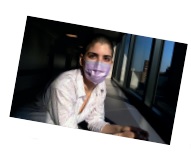
Cancer World Journalist Grants
This article was financed by a Cancer World journalist grant, a scheme set up to encourage journalists who work in print, online or broadcast mass media to explore systemic issues that have a significant impact on cancer patients. The author, Prune Antoine, is a freelance journalist who writes for a variety of publications including Le Monde magazine, Géo, Madame Figaro, Elle, and XXI. Publication of articles financed by a Cancer World grant is not exclusive to Cancer World, and authors are encouraged to publish the original or variants in other outlets. More information about the grant can be found at https://archive.cancerworld.net/media/cancerworld-journalist-grant/



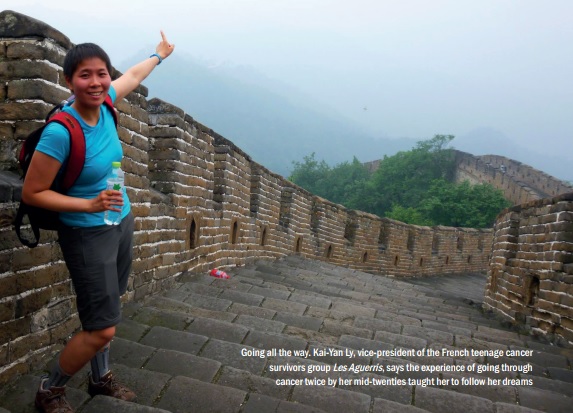

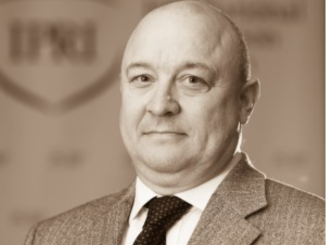
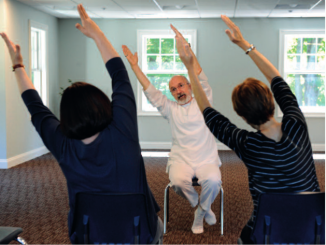

Leave a Reply